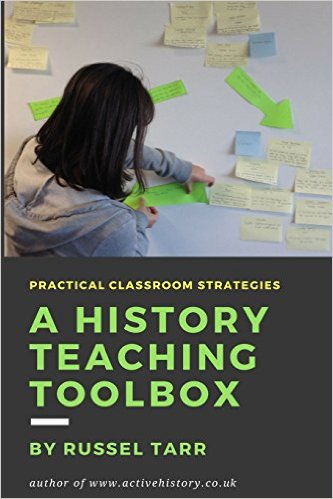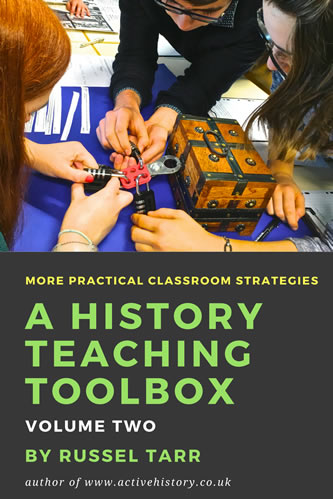For IB / A-Level historians. Political Parties in Russia before 1914: Full Version Political Parties in Russia before 1914: Abridged Version I personally use the abridged version with my students these days, but for students who desire a more thorough analysis, the full version may be more to their tastes. Students are encouraged to look…
Month: April 2008
Causes of World War One: History Revision
Causes of World War One: Connecting the Factors: A diagram which helps students to connect the various causes together rather than simply list them.
Hegel, Marx and Dialectics
For IB / A-Level historians. An accessible introduction to the concepts of Hegelian and Marxist Dialectic which will stand students in good stead for 20th Century Soviet history.
Edexcel is recruiting Examiners for GCE/GCSE History
Edexcel is currently looking for History teachers to become examiners for the June 2008 summer examination series for mainly the following units: Votes For Women Italy 1848-1925 USA & China 1945-76 Life In Authoritarian Regime Joining Edexcel’s Assessment Associate community offers an excellent opportunity to gain greater insight into the assessment of candidates as well…
Causes of the First World War
This handout provides a breakdown of the most recent questions from the IGCSE History examination focusing on the Causes of the First World War. It then provides advice about how to prepare history revision notes for each area using this template.
Causes of the Spanish Civil War Simulation
A brand new history game for students of the Spanish Civil War. After reading about each of the problems facing Spain on the eve of the civil war, students rank them according to urgency and then have to decide which policy seems the most appropriate response to each problem. At the end of the simulation…
Social Conditions in the Countryside in Tsarist Russia
For IB / A-Level historians. A series of sources and questions outlining the state of agriculture at the time that Peter Stolypin became prime minister.
Jigsaw Diagram
The Jigsaw template is designed to allow students to make connections between various factors in an engaging manner. The “pieces” of the jigsaw can have text written into them. When they are dragged next to each other, they “snap” into place. The pieces can be colour coded as appropriate.
Lights Out!
This template allows you to load an image, then “turn the lights off” so that you can view just small sections of the image at a time. It provides a great way of getting students to look more closely at an image.
Timeline Generator
A timeline is a great way of getting students to select and summarise key events across a defined period. This activity allows them to do this simply and effectively, and to colour-code the events if they choose to do so. They can also add a background image before printing off their work and / or…
Historiography of the October Revolution of 1917
Students consider the main questions which divide historians and form their own judgement on which answers they find the most convincing.
The Reign of Nicholas II (to 1905) [interactive]
For IB / A-Level historians. A “Fling the Teacher” quiz designed to test how much students have learned. Give 10 marks for the first person to finish, 9 for second place, and so on.
Historiography of the February Revolution of 1917
Students consider the main questions which divide historians and form their own judgement on which answers they find the most convincing.
Turning Page Template
This generator allows you to cut and paste text into a template and turn it into an animated book!
Venn Diagram
This interactive Venn Diagram Generator is a great Flash template for use in the classroom.
Ishikawa Diagram
This fishbone (Ishikawa) template is an essay planning tool. Whereas the burger diagram encourages students to think in terms of introduction, three main sections and a conclusion, the fishbone approach involves selecting four main factors, then providing three key pieces of detail about each.
Fishbone Diagram
This fishbone (Ishikawa) template is an essay planning tool. Whereas the burger diagram encourages students to think in terms of introduction, three main sections and a conclusion, the fishbone approach involves selecting four main factors, then providing three key pieces of detail about each.
Diamond 9 Diagram
This Diamond Nine Diagram helps to prioritise and categorise key factors. The most important factors are placed towards the top of the “diamond 9 “. The least important factors are placed towards the bottom. Factors of equal importance are placed in the same row. Each factor can be colour coded for further sophistication.
Random Name Picker
This is a simple tool which is a great way of rounding off a unit and revising important dates, concepts and people. It can also be used to randomly pick a name from a list of students. You can copy and paste your data direct from Word, Excel and other programs. Random Name Picker
Countdown Timer
This online countdown timer has a selection of tunes to choose from, and you can even upload your own to it.
Flashcard Generator
Use this interface to create flashcards free of charge!
The Events of 1904-1905: The Russo-Japanese War, Bloody Sunday and the 1905 Revolution [computer activity]
For IB / A-Level historians. In this exercise, students are presented with a wide range of primary source material which “tells the story” of 1904-1905 from a variety of perspectives covering the main topics. Students “cut and paste” the information into the appropriate cells of a table which breaks each event into its causes, events…
Jack the Ripper Quiz
A new quiz on Jack the Ripper, created using www.classtools.net.

